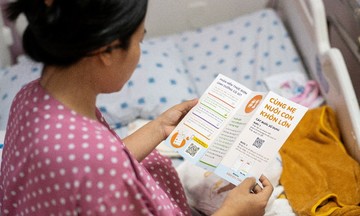On 14/8, Dr. Duong Minh Tuan from the Endocrinology and Diabetes Department at Bach Mai Hospital shared the case of a 24-year-old pregnant woman who, fearing insulin injections and believing a restricted diet was sufficient, opted for self-monitoring at home. Her post-meal blood glucose level reached 10.6 mmol/L, significantly higher than the safe level for a non-pregnant person (below 7.8 mmol/L). However, she simply thought, "Eating less will fix it".
At 30 weeks, she experienced fatigue and vomiting. Initially mistaking it for a stomach ache, she delayed seeking medical attention. Hours later, with worsening symptoms, she arrived at Bach Mai Hospital. Doctors found her blood sugar had soared to 19.5 mmol/L, coupled with diabetic ketoacidosis (DKA), a dangerous acute complication of diabetes. An ultrasound revealed the fetus had no heartbeat.
Dr. Tuan explained that DKA in pregnant women can occur even with blood sugar levels as low as 8-11 mmol/L. During pregnancy, the placenta produces hormones that decrease insulin sensitivity, making the body more prone to breaking down fats and producing ketones. This can happen rapidly, within hours, leading to dehydration, blood acidification, reduced placental blood flow, oxygen deprivation, and ultimately, fetal distress or stillbirth. This is an obstetric and endocrine emergency, with a fetal mortality rate ranging from 9% to over 30%.
Treating diabetes during pregnancy is not harmful to the fetus; on the contrary, it's the safest way to protect the unborn child from the risks of complications. Doctors recommend regular prenatal checkups for early detection and management of any abnormalities. Between weeks 24 and 28, pregnant women are screened for gestational diabetes. If the results are positive, doctors advise on diet and exercise to prevent severe complications.
Thuy Quynh












